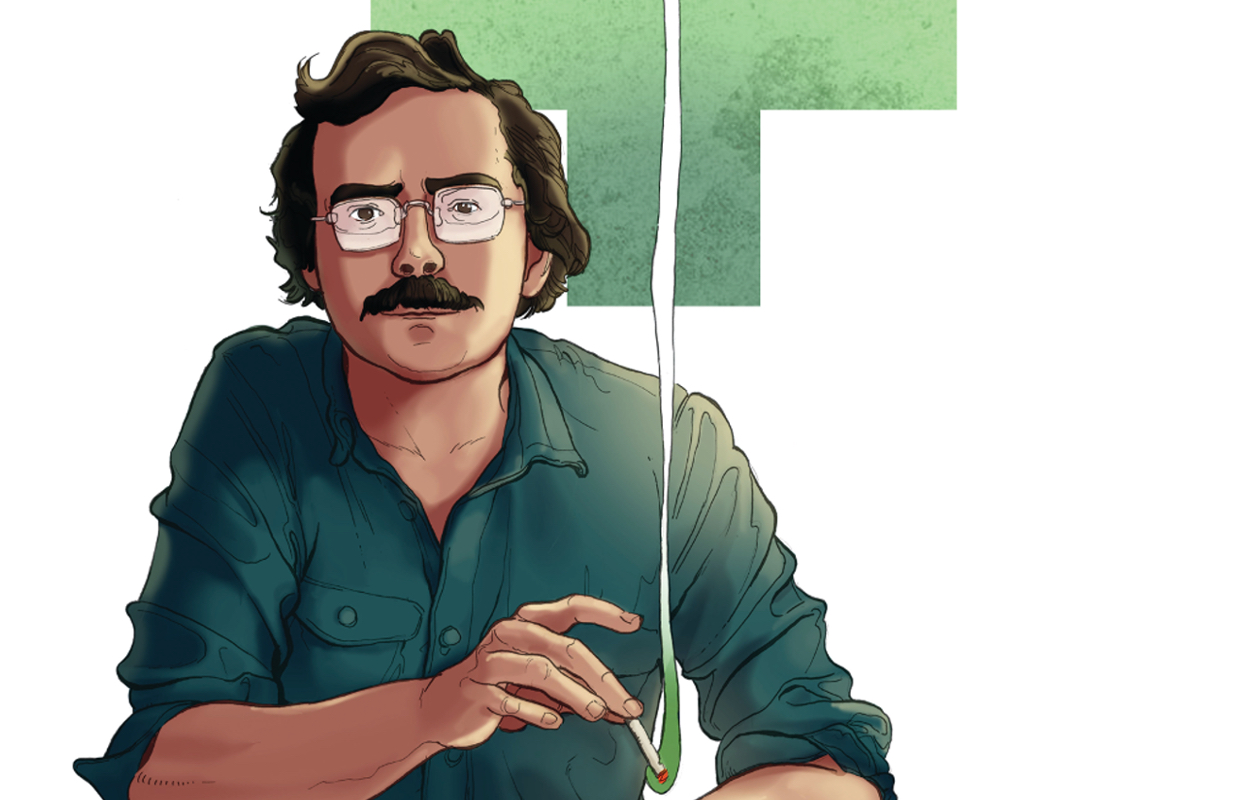
Cannabis
The Father of the Medical Marijuana Movement
A building avalanche of medical and general decriminalization continues to barrel across the nation, and with it a growing wave of awareness. Every day more people discover the medicinal power of the cannabis plant, and every election cycle more of them gain safe access to it. But many of those people don’t realize that this medical revolution all started with the principled fight of a single man.
This November will mark the 40th anniversary of the beginning of the medical marijuana movement. Many in the cannabis community believe that movement started in 1996, with the passage of California’s Prop 215, but in fact, that ballot initiative was the culmination of a 20 year struggle by a man named Robert C. Randall.
In 1976, virtually no one knew about the medical uses of marijuana. The United States (and through its efforts, much of the world) had an absolute prohibition against any use of marijuana – medical or otherwise — and the federal government was engaged in a decades-old campaign of “locking up” cannabis and throwing away the key.
Government research was only approved to demonstrate marijuana’s harm. When the data didn’t pan out that way, the research was shut down. Any study demonstrating a beneficial use was kept under tight control until the funding ran out, then the contract was not renewed.
It was not a good time for medical marijuana, and indeed, that concept hadn’t really taken shape yet. But the Baby Boomers soon discovered that marijuana was, well, fun. And while some of them were having that fun, they also discovered that marijuana seemed to alleviate certain medical conditions.
A “Singular Moment” Sparks a Movement
Robert Randall was a college student when he first tried marijuana. But after receiving his master’s degree in rhetoric from University of South Florida in 1971, he moved to Washington, D.C. with big ambitions of becoming a political speechwriter and little time for smoking pot.
A year later, in 1972, he was diagnosed with advanced, open-angle glaucoma. He was 24 years old and doctors told him he’d be blind by the time he turned 30. Randall was devastated. Out of work and on welfare, he could sense the accuracy of the doctor’s prognosis — none of the prescribed medications were effectively lowering the elevated eye pressure that was crushing his optic nerves.
Not long after receiving the earth-shattering diagnosis, Randall was offered a joint by a new friend. It had been a long time since he last smoked a joint, and he welcomed the opportunity to get high and forget his troubles.
But even as he prepared to light up the joint, Randall looked out the window and saw the visual manifestation of his disease: tricolored halos around a nearby streetlight. Slightly disheartened but undeterred, he lit up the joint and was soon enjoying the sensation of being high.
20 minutes later, he looked at that streetlight again and the halos were gone.
When he wrote about the event 22 years later, he characterized it as an ephemeral “eureka” moment.
“It was a singular moment. I immediately drew the connection between the use of marijuana and the now-absent halos. Indeed, parts of my brain absorbed the connection so quickly and so assuredly that I was certain I must be stoned, which of course I was,” he wrote. “I tried to follow the exploding synaptic spasm but was quickly left behind. The thought was too fast, too large and complex to pursue and understand, to place into words.”
Randall eventually accepted that his initial observations were correct: marijuana was alleviating his symptoms. In fact, by adding marijuana to the prescribed medications, Randall’s ocular pressures fell into the safe range.
His doctor was confounded, but Randall didn’t let on. In fact, Randall told very few people about his secret cure. He had no desire to be a hero — or more likely a martyr. He simply wanted to save his sight and get on with his life.
The Dawn of Modern Medical Marijuana
But one person he did tell was me — the woman who would become his wife. Robert and I met in college and became good friends. That friendship grew into love and, by the time of his diagnosis, Robert and I were deeply involved.
Two years after his diagnosis, in 1974, he asked me to share his life with him. We discussed his illness, we knew what the future might bring… or so we thought.
Eighteen months later, we were both arrested for cultivating marijuana on our sun deck in Washington, D.C. We could have plead guilty to misdemeanor charges, paid a fine and gone on our way, but we were convinced marijuana was helping Robert.
Then, to our utter amazement, we discovered that the federal government was engaged in research that had demonstrated marijuana’s ability to lower intraocular pressure just weeks after our arrest.
Robert contacted the researcher, Dr. Robert Hepler at UCLA, and by December — with financial help from NORML and The Playboy Foundation — Robert was at UCLA for 10 days of study, which conclusively demonstrated that without marijuana Robert Randall would go blind.
It took almost a year for us to build the court case, but in November 1976, Robert was found not guilty of marijuana cultivation by reason of medical necessity. In that same month, the federal government granted Robert’s petition to use federal supplies of marijuana in treating his glaucoma.
Robert became the only individual in the country allowed to legally possess marijuana for medical purposes. It was a huge news story and the medical marijuana movement was born.
We immediately began to hear from others who had also discovered the medical benefits of cannabis and we began to organize. In April 1977, 13 patients filed a petition with the U.S. Attorney General asking him to reschedule marijuana and allow medical use. That effort went nowhere, but we began to understand the power of the issue and, more specifically, the power of the seriously ill to help change hearts and minds on cannabis.
The rest, as they say, is history.
A Legacy of Activism for MMJ Rights
Between 1978 and 1981, working with patients in states across the nation, we helped pass 34 state laws that recognized marijuana’s medical value and tried to establish state-wide programs of research. We founded the first non-profit dedicated to medical cannabis, the Alliance for Cannabis Therapeutics, and lobbied for federal legislation we drafted, which had 110 co-sponsors at one point.
The Alliance became the lead party in re-scheduling hearings before DEA Administrative Law Judge Francis Young between 1986-1988. It was a huge victory when Judge Young recommended re-scheduling cannabis, and a heartbreaking loss when the Appeals Court upheld the DEA’s authority to overturn the truth and reject Young’s decision.
We shifted our attention to the AIDS crisis and founded MARS – the Marijuana/AIDS Research Service – which allowed hundreds of AIDS patients to file requests with FDA to medically use cannabis.
The government’s response was callous and unthinkable. It shut down the only program of legal access in the country. The public’s anger at this closure led directly to the success of Prop 215 in California, whcih marked the start of the second wave of states attempting to provide their citizens with compassionate, legal access to medical cannabis.
Robert Randall directed all of this activity personally for more than 20 years, until he died in 2001. In today’s heady environment of legal, statewide cannabis programs, it’s easy to forget just how difficult it was for those of us involved in MMJ activism in the early days. Robert was subject to numerous threats against his free speech, including one from President Jimmy’s Carter’s drug abuse advisor, Dr. Peter Bourne.
Robert’s medical supplies of cannabis were also disrupted by federal officials on several occasions. In the winter of 1978, there was an orchestrated effort to completely shut off his supplies of cannabis and force him back to the erratic and expensive illegal supplies on the street. Had this effort been successful he would have gone blind, without doubt.
He doggedly pursued re-acquiring legal cannabis, and in doing so laid the ground work for at least a dozen other patients to acquire federal supplies of marijuana for medical purposes through the federal compassionate Investigational New Drug program.
Robert wasn’t the first individual to discover that cannabis has medical utility, but what distinguished him was his ability to articulate the issue and his courage to do so.
He was articulate, charming and his training in rhetoric made him an excellent orator and debater. He was also fiercely dedicated to the rights of patients to use cannabis with the help and guidance of their physicians. After his death in 2001, he was called the “Father of the Medical Marijuana Movement,” and to me it seems more than fitting.
Medical cannabis has come a long way in 40 years, but Robert would be the first to say that there is still a long way to go. The rights of patients are still being denied and until every patient in the nation has access to legal, medical cannabis, Robert’s dream is still unrealized.
Originally published in issue 21 of Cannabis Now. LEARN MORE
TELL US How has medical cannabis improved your life?

























